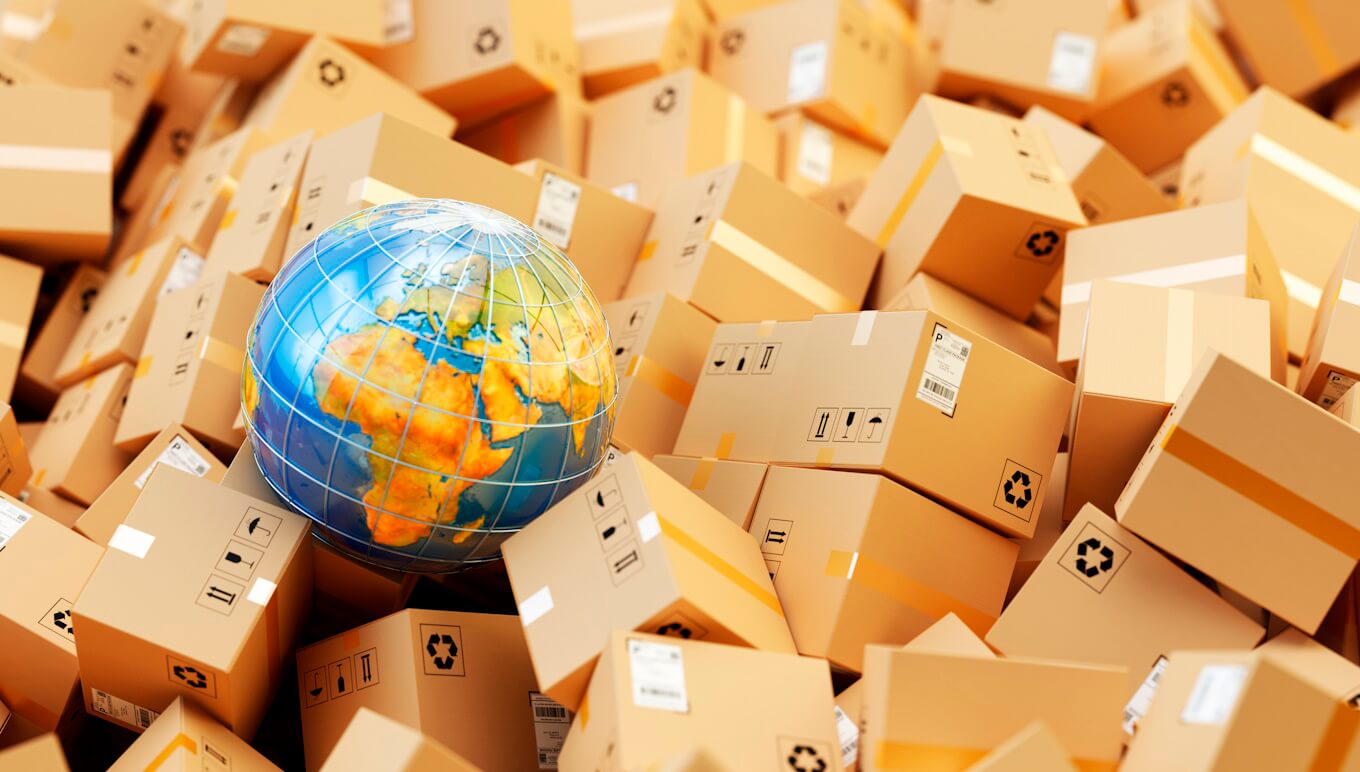Destacado en este post
How To Reduce Waste in the Fashion Industry
How To Reduce Waste in the Fashion Industry
Oct 8, 2024
 Aptean Staff Writer
Aptean Staff Writer 
Reducing waste in the fashion industry is essential for your business on multiple fronts. Not only does waste increase your costs and eat into profits, but it’s harmful to the environment, too. This can damage your reputation as consumers become more aware of the impact of their purchases and choose to support fashion brands that prioritize sustainability.
The best way to tackle waste in your fashion business is to optimize your supply chain processes. Technology is key here—offering powerful tools to enhance the efficiency of your end-to-end operations. You can streamline your workflows, reduce waste and make smarter decisions by implementing a range of fashion software solutions along your digital transformation journey.
The right technology enables you to monitor inventory levels, track shipments and predict demand more accurately. By leveraging data and automation capabilities, you can minimize overproduction, optimize resource use and reduce costs. This results in less waste and fuels a leaner, more agile fashion supply chain that can quickly adapt to changes.
In this blog, we'll shine a light on the role of modern technology in cutting down supply chain waste in the fashion industry. So you can not just address the pressing challenges of your day-to-day operations, but potentially transform the industry's future for the better.
1. Address Overproduction
Of course, you never want retail racks sitting empty or online inventory to run dry right when you have customers wanting to buy your items. On the other hand, unsold goods take up storage space and eventually require disposal. As well as the loss of profit your fashion business incurs, many of these extra garments end up in landfills, wasting resources and harming the planet.
To fix this, your fashion brand needs deeper data insights to predict trends and consumer behavior, enabling the calculation of more precise production quantities. With the right fashion software, instead of using an educated guess, you can leverage past sales and trends data to determine what's popular and how much stock you’ll need—not too much or too little.
A fashion enterprise resource planning (ERP) solution provides accurate demand forecasting capabilities and advanced analytics to help you align production planning with actual market needs. This reduces the likelihood of surplus inventory and financial losses while ensuring you always have the right inventory to fulfil orders.

2. Eliminate Inefficient Inventory Management
Streamlining inventory management is critical to reducing supply chain waste in the fashion industry. Poorly managed inventory leads to overstocking, stockouts, excessive markdowns and wasted materials. For your fashion brand, good inventory management means understanding exactly what materials you need to fulfil orders, tracking them through the supply chain, knowing where they're stored in your facilities and being alerted when completed items are ready to send to stores or fulfil online orders.
For all of that, you need transparent communication from the top to the bottom of your supply chain. The use of the right fashion software can help you achieve this end-to-end visibility and inventory tracking.
A fully integrated fashion ERP platform with warehouse management systems (WMS), a vendor portal and electronic data interchange (EDI) functionality offers you a powerful toolset to optimize inventory management. This comprehensive software ecosystem enables efficient communication with supply chain partners to ensure you have the materials and trimmings you need, when you need them. Then, the system offers accurate, real-time visibility into your inventory levels—helping you track products and components from when they arrive at your warehouse until they reach your customers.
Together, these functionalities enable you to minimize waste in many ways, from reducing wasted man hours on manual communication, data entry and hunting down missing inventory, to maximizing resource utilization and reducing overstocking. In short, accurate data gives your fashion brand better control over supply chain and inventory management, ensuring you get the most from every resource at your disposal.
3. Enhance Supply Chain Transparency
Not only can enhancing supply chain transparency help you identify causes of waste but having that information available and accessible can help build trust with consumers concerned about the ethical practices of the brands they support.
When you can see exactly what's going on at every stage of your operation, it's easier to identify areas where things are going to waste. Your company should know where every piece of fabric comes from, how it was made and how much water and energy it took. Technology plays a key role here, enabling you to track and verify the origins of materials and ensure they align with your sustainability standards.
Imagine having a digital record of every piece of fabric from the farm to the finished garment. This is possible with technologies like blockchain. It plays a crucial role in the fashion supply chain by integrating with an enterprise resource planning system to promote full end-to-end supply chain transparency. This can help ensure you have visibility of not just any internal inventory waste, but wider causes of waste such as excess water and energy consumption among suppliers and partners.
Additionally, PLM software can help prioritize sustainable supply chain choices in your product development stage as you’re able to select sustainable materials from sources that minimize the wastage of natural resources. By promoting transparency in supplier relationships and using technology to bolster these efforts, the fashion industry can commit to reducing waste and promoting sustainability.
4. Reduce Material Waste
Material waste during manufacturing is a significant concern. When you minimize waste at the material level, you prevent excess fabric, trims and other components from piling up. By doing so, you not only improve efficiency, but also lessen the environmental impact of your production processes.
The adoption of advanced fashion technologies, such as automated cutting machines and 3D printing, can significantly minimize waste in your manufacturing processes—and that means lots of cost savings for you.
In addition, with a shop floor control (SFC) system, you’ll get tighter visibility and control over your shop floor processes—helping you ensure your workers and facilities produce less waste. Automated data tracking provides real-time visibility of performance metrics such as material usage, machine efficiency and worker output, so you’re able to identify areas for improvement.
For instance, if a particular worker or machine consistently uses more material than expected, the system will alert you so that you can take corrective actions immediately. SFC also helps standardize processes and ensure that your workers follow best practices. This can reduce your chances of errors and wastage of resources like fabric, water or energy.
On top of this, shop floor systems help you meet stringent compliance and quality standards. With precise monitoring and management functionality you can ensure that every step in your manufacturing process adheres to your predefined quality criteria. This reduces the risk of defects and recalls, safeguarding your brand reputation while meeting regulatory requirements and avoiding the huge volume of waste incurred in these scenarios.

5. Minimize Product Returns
Minimizing product returns is a crucial strategy for reducing supply chain waste in the fashion industry. When products come back, they might need to be repackaged, repaired, or even discarded, all of which add to your overall waste metrics and costs. The value of returned retail goods in 2023 reached a substantial $743 billion, accounting for roughly 14.5% of total retail sales.
So, how can we cut this waste? The answer is simple: fewer returns. If people keep the clothes they buy, you save money, reduce garment waste and cut environmental impact. It’ll come as no surprise that technology plays a crucial role in helping you minimize returns.
For example, accurate product descriptions, high-quality images and virtual try-on tools can help your customers make better purchasing decisions. When customers know exactly what they’re getting, they’re less likely to return items. AI and machine learning can also analyze past return data to identify patterns and suggest improvements, such as better sizing options or more detailed product information.
To further aid in your return reduction efforts, you can integrate SFC with your fashion ERP system to ensure better quality management by monitoring production in real time and addressing issues as they arise. This reduces imperfections and ensures product consistency—meaning fewer returns and a better overall customer experience. Plus, your PLM can help you manage your products' full lifecycle by tracking and optimizing every stage. This helps you iterate on product longevity and ensure that products are responsibly disposed of or recycled at the end of their life.

Reduce Waste and Boost Efficiency With Aptean’s Fashion Software
Reducing waste in your fashion supply chain isn't just about being friendly to the planet—it's good business, too. By minimizing overproduction, better managing your stock and choosing suppliers who align with your brand objectives, you can save money and improve efficiency. All the while, you’re satisfying consumer desires for sustainability and transparency.
Technology is your most powerful weapon in this fight to tackle fashion supply chain waste. From predicting what people will buy to helping you control shop floor processes, there are tools to help you at every step—empowering you to streamline your operations and significantly reduce waste.
With more than 800 apparel industry customers in 25 countries, Aptean is the ideal partner for this journey. Our fashion software ecosystem offers a comprehensive approach to managing and optimizing every aspect of your supply chain. By implementing our proven technologies—from industry-specific fashion ERP to specialized PLM and SFC software—your brand can achieve more efficient operations, reduce waste and implement more sustainable fashion strategies.
As the fashion industry continues to evolve, leveraging our innovative technologies can serve as a critical foundation for building a more sustainable and resilient business while simultaneously boosting your operational efficiency and productivity.
Read our supply chain whitepaper to learn more about how Aptean software reduces waste and streamlines your fashion supply chain or contact us today to schedule a personalized demo.
¿Todo listo para transformar tu negocio?
Tenemos las soluciones ERP especializadas que necesitas para superar los desafíos de tu sector.



